Important facts about Cecropia Tree
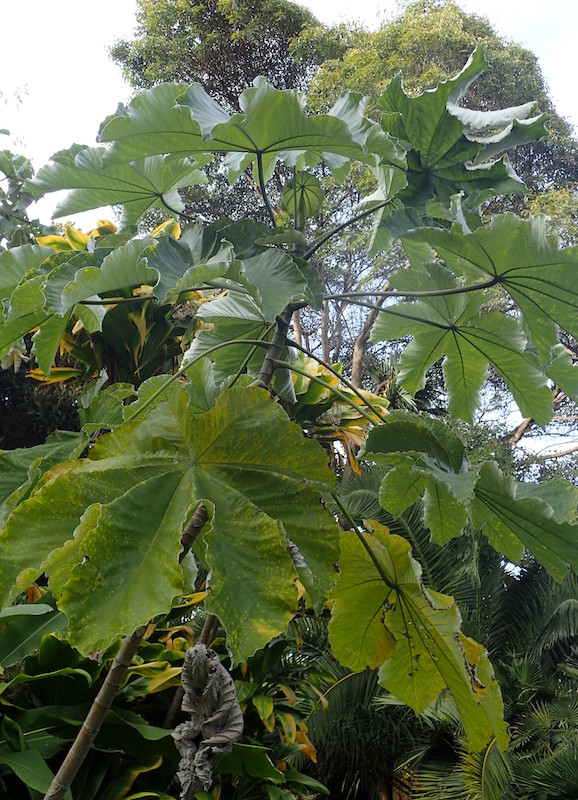
When you visit Costa Rica you will be amazed by the exuberant vegetation that covers the big mountains and the one that grows surrounding the Pacific and Caribbean coast. This country has an incredible diversity of plants, nowadays over 10,000 species have been recorded in this territory since European naturalists and explorers started doing research and collecting the flora around 1850.
In the same way, all these plants are distributed in the places where they are better adapted; few of them are unique to some specific habitats. However, many are very common to see in any kind of forest, for example, the Cecropias that are known as Guarumos in Costa Rica.
In addition, when you are hiking through the woods, you can expect Cecropia trees on the way. They are easy to identify; their main trunks look skinny with rings and hollow inside between the nodes. The leaves are big and peltate, which means that the petiole grows from the center of the leaf, not from the bottom edge like other plants. They seem like umbrellas, but they are lobed, and depending on the species, the leaves will have more or less lobes.
The flowers grow in clusters from fingers-like spikes, and they will develop the small fruits on the same structure.
In Costa Rica, there are five species the Cecropia which are Cecropia obtusifolia, Cecropia insignis, Cecropia angustifolia, Cecropia peltata, and Cecropia pittieri. The last one is extraordinary because it is an endemic tree of Cocos Island.
Next, you will see a brief information on the main features that could help to identify the species.
Cecropia peltata
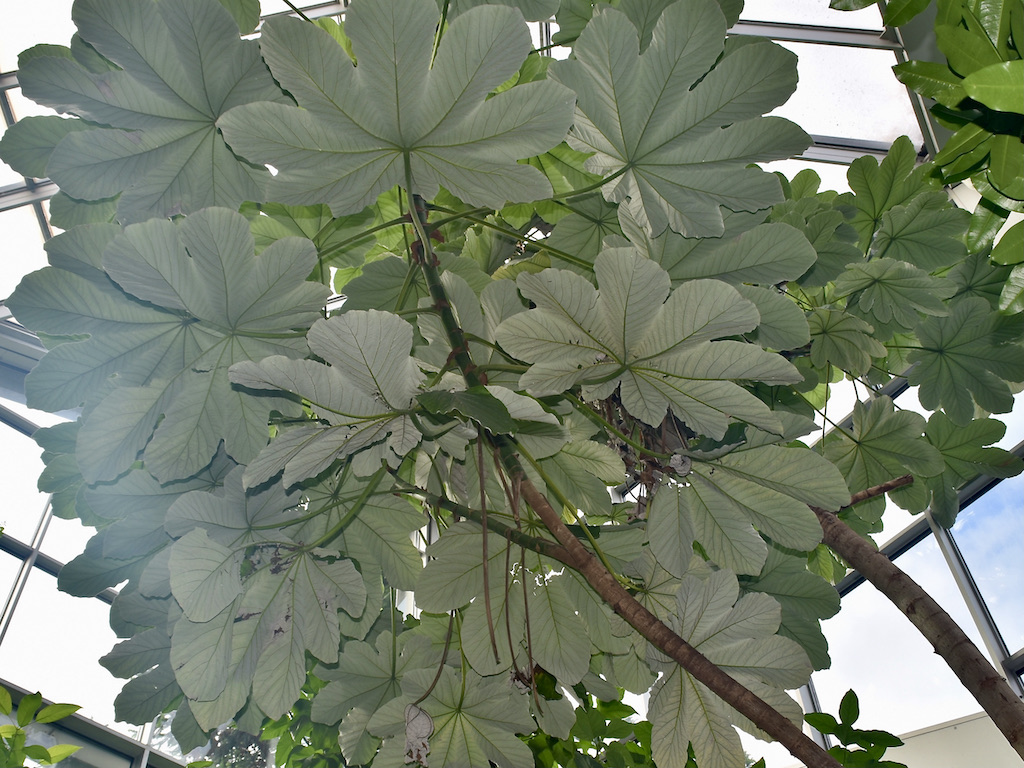
It is most common in the dry and wet forest of the Pacific coast but also in the Atlantic slope.
The upper part of the leaves has a sandpaper texture.
The leaf has 11 or fewer lobes.
The spikes where fruits are located can measure from 4 to 10 cm.
Cecropia angustifolia
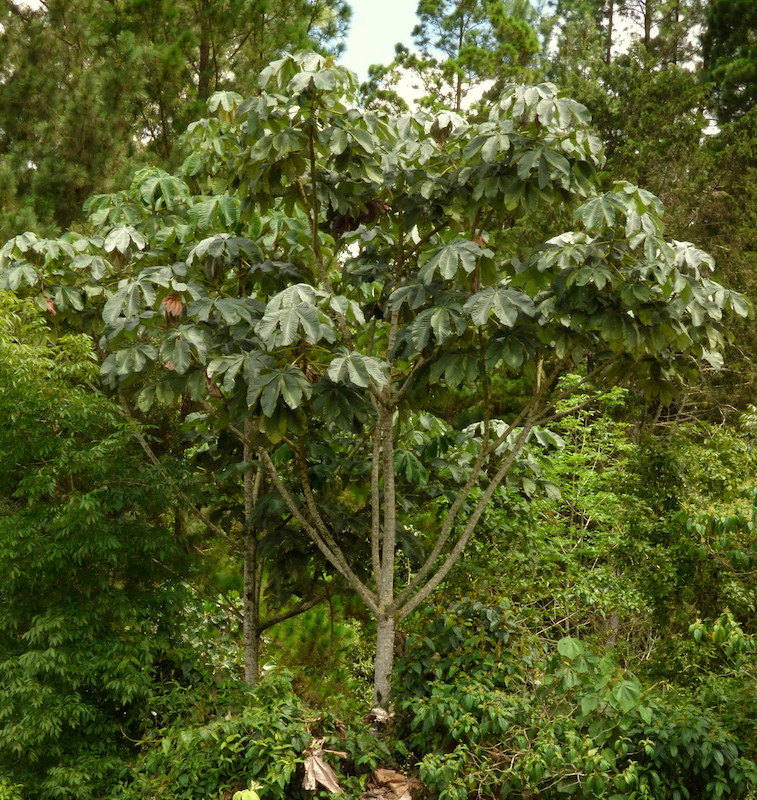
This species is found in middle elevations, where the cloud forest| is predominant, above 1300 above sea level.
The upper side of the leaves is rough.
The leaf has ten or more lobes.
The spikes of the fruits are short.
Cecropia insignis
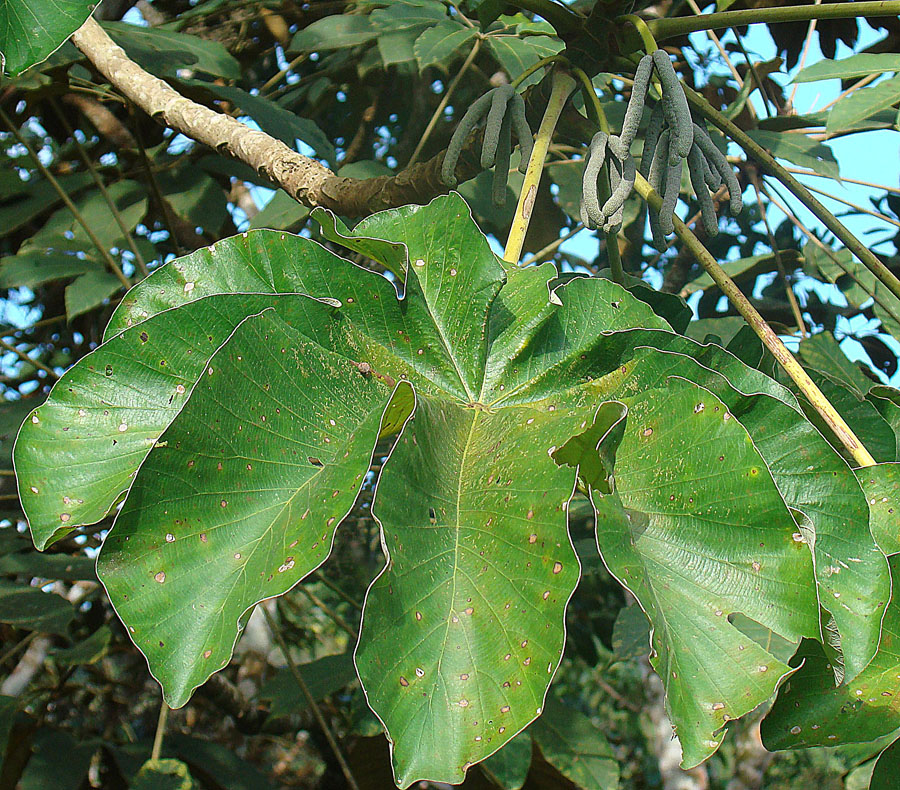
This one grows in the wet areas of the Atlantic slope and the humid forest of the Pacific slope.
The upper leaf is not hairy or rough like other species; it is smooth.
The leaf has ten or fewer lobes.
It has the most oversized leaves among the Cecropia trees.
The fruits in this species have a medium size, ranging from 6 to 18 cm.
Cecropia obtusifolia
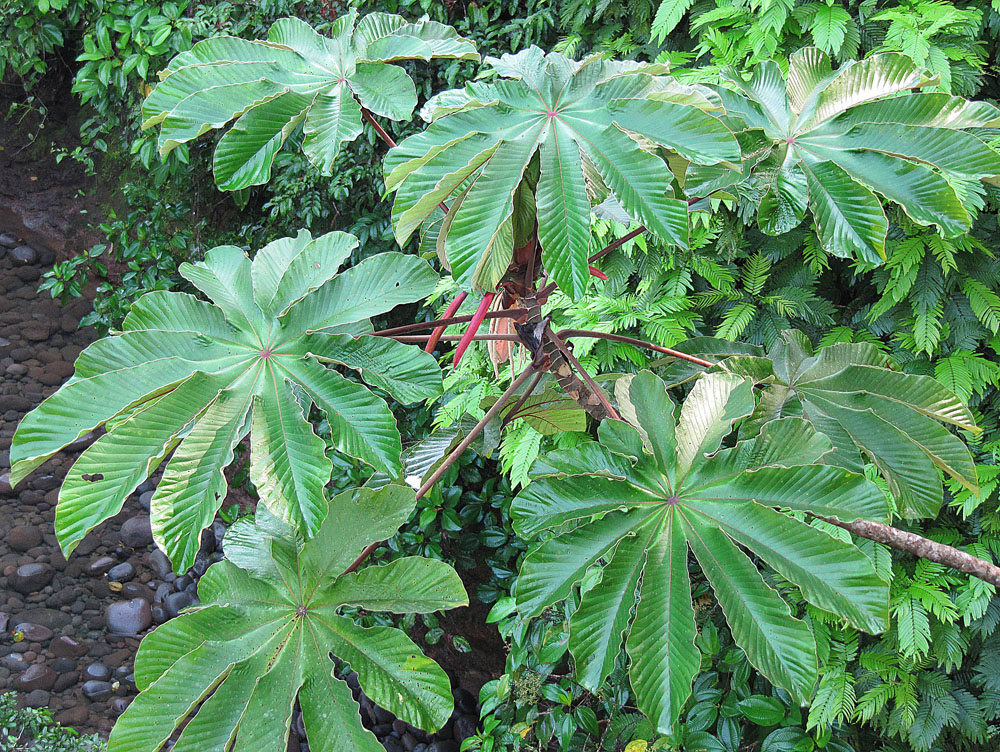
It is widespread on both slopes.
The surface of the leaf is usually rough.
The leaf will have ten or more lobes, but in this case, they are longer than other species.
It has a red color in the petioles of the leaves.
The spikes of the fruits are very long and can reach 50 cm long.
These trees are considered pioneer species, meaning they are one of the first trees that will grow in disturbed areas where humans have been modifying their habitat. For that reason, they are essential because these species stop the woods’ degradation and help recover many habitats. The cecropias are commonly found in the forest edges, near open areas like cattle fields, and along the roads.
In addition, the Cecropia tree is fantastic because it belongs to the group of plants that are called myrmecophytes; these are the species that have a relationship with the ants. In the case of Cecropias, they have an exciting symbiosis of mutualism with the Aztec ants.
How does this symbiosis work?
First, to understand this interaction, you should check just at the trunk, next to the base of the petiole of the leaves. When the leaves fall, they will leave a triangular area in the box typically covered with trichomes. This part is called trillium; each of these can produce from 2500 to 8,000 Mülleriam bodies during 20-25 days while it is in reproduction.
These Muller bodies are compounds of at least 50% glycogen and proteins collected by the same Azteca ants living in the plant. Those Cecropia trees do not have a colony of these ants, used to keep more Mullerian bodies, because the trees with Azteca ants are not often seen with the Mullerian bodies because the ants are very efficient at collecting them. However, sometimes they are eaten by several kinds of birds, such as Euphonias and Warblers, as well as some insects.
Therefore, this symbiosis is mutualism because the tree evolved through time to get a hollow trunk to attract the ants, who will defend the tree from other herbivores and insects trying to eat the leaves. So, while the tree provides the ants with food resources and a refuge to live and reproduce, they will have the task of keeping away the organisms that could threaten the tree; even some air plants or small vines can be removed by these angry insects.
Moreover, “Guarumos” are important plants because the leaves feed many wildlife. A good example is the Three-toed sloth who loves these leaves. Also, other mammals, like monkeys, kinkajou, and some birds, like toucans and Tanagers, feed on the fruits, while others, like woodpeckers, will take advantage to feed on the Azteca ants.
Author: Yostin Rojas – NGCR Guide
